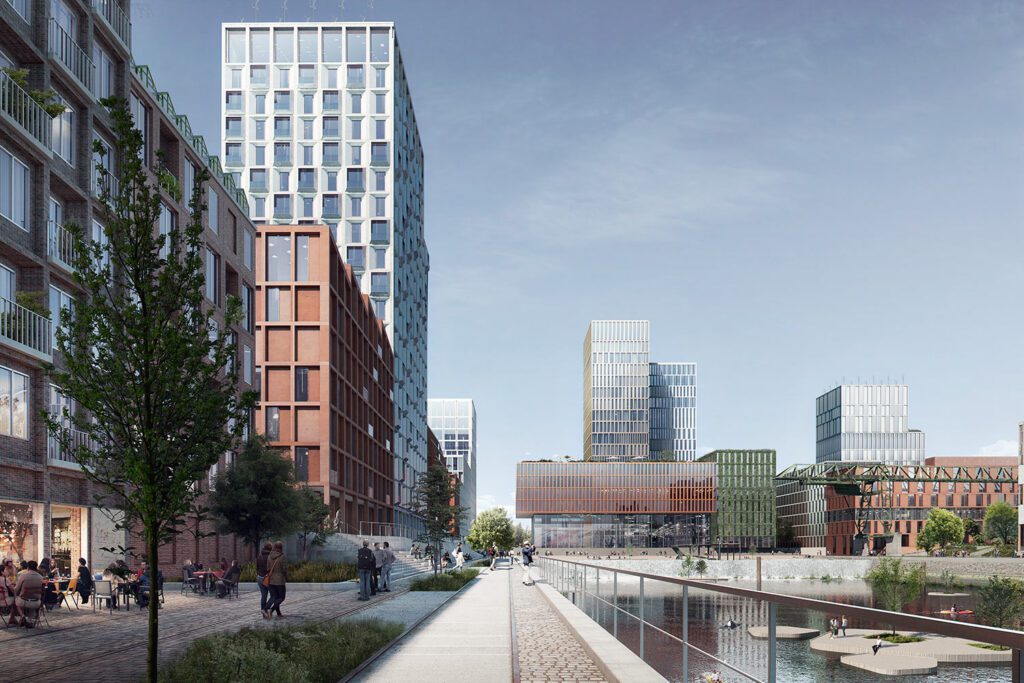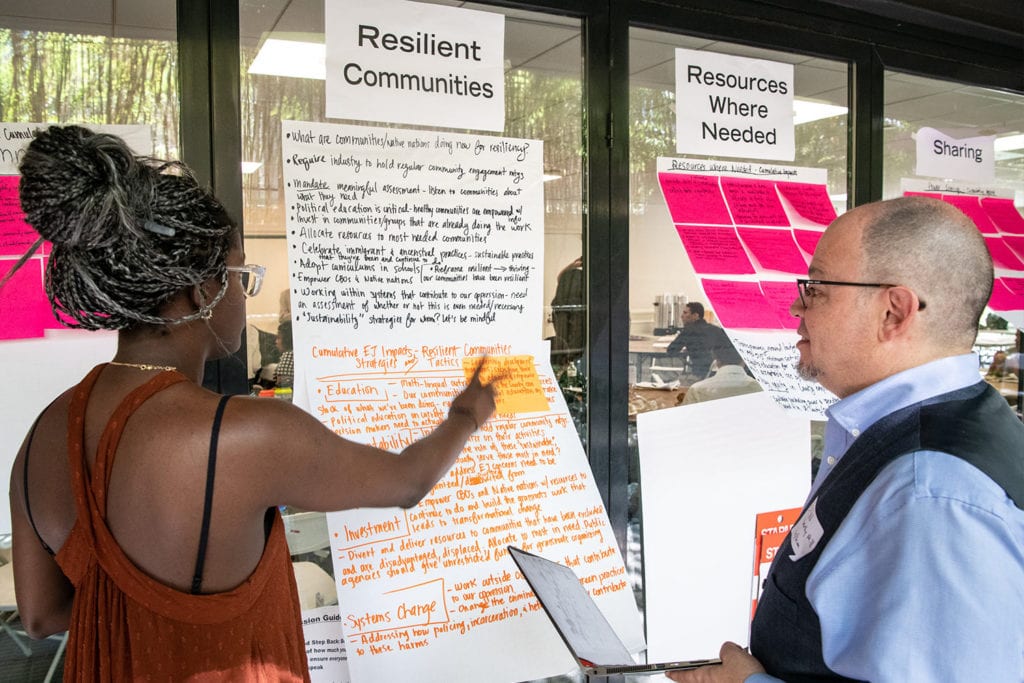Making the case for Clean Construction in Toronto
Buro Happold and C40 Cities have launched the first in a series of Clean Construction deep dives. They support cities in resourcing efficient, net-zero construction to deliver healthy, resilient and thriving urban communities.
The built environment is the fabric of our daily lives, but it is also the biggest source of greenhouse gas emissions. The engineering, architecture and construction industry has a huge role to play in bringing about positive social, economic and environmental change.
Construction alone (excluding the operations of buildings) currently contributes over 23% of the world’s greenhouse gas emissions1 and more than 30% of global resource extraction and use2. Failure to reduce the impact of construction in our cities poses a serious risk to the environment.

Clean Construction in our cities
As a result, C40 Cities launched its global Clean Construction Programme in 2019. The programme supports cities to mitigate the impact of construction, strengthen resilience to climate risks, and facilitate dialogue within the industry.
A series of deep dives into six cities around the world — developed in partnership with Buro Happold — take this one step further. The reports provide local, actionable advice to help city leaders make the case for clean construction. They also offer guidance for other cities around the world. The Toronto report launches the series. Construction in Toronto is a significant part of the economy. It employs thousands of people and delivers large-scale building and infrastructure projects across the city.
The report demonstrates how the City of Toronto can implement policies and initiatives to ensure the built environment reduces its embodied carbon emissions and contributes to a healthy, green city for both the residents and the planet. This was achieved by analysing the construction industry landscape and understanding local government authorities.
Buro Happold’s sustainability consultants and C40 Cities collaborated with Toronto’s municipality and construction industry stakeholders to adopt a mixed-methods approach. The deep dive presents evidence gathered from cross-departmental and cross-industry analysis. A broad literature review was complemented with in-depth interviews and surveys with a variety of stakeholders, in order to propose policy areas for bringing about a transition to Clean Construction.
A green and equitable future for Toronto
Toronto’s relative wealth, access to low-carbon materials, skilled industry and commitment to climate action, make it well placed to adopt Clean Construction policies. Toronto is already working towards an equitable and green recovery by making sustainability commitments to mitigate climate change.
For example, the city has developed a 2050 net zero strategy (TransformTO). They have pledged that by 2030, all new city buildings will be designed and built to produce net zero operational greenhouse gas emissions. And by 2050, all existing buildings will be retrofitted to achieve the highest possible reduction in operational emissions.
Toronto’s overall net zero emissions goal can only be achieved through cross-divisional collaboration and innovation. TransformTO sets a series of ambitious targets, with buildings accounting for the largest source of emissions, so this clean construction work will be vital to achieve our targets.
Linda Swanston, Manager, Policy & Research Environment and Energy Division, City of Toronto
Transitioning to Clean Construction
Eight policy interventions were recommended for Toronto. All these policies have the potential to bolster the city’s transition to Clean Construction. Above all, they focus on the adoption of circular economy principles enabled by whole life cycle considerations. The policy interventions are:
- Embed circular economy principles into the construction industry
- Conduct end of life demolition assessments to encourage renovation, reuse and adaptive use of buildings as an alternative to demolition
- Carry out whole life embodied carbon assessments to drive design and planning decisions before construction begins
- Consider prefabricated, off-site and modular construction methods
- Use bio-based materials and certified timber products during construction
- Where concrete cannot be avoided, favour low-carbon concrete, cement replacements and recycled aggregates during construction
- Provide Clean Construction training, guidelines and tools
- Support the industry by collecting and sharing clean construction data.
These policy interventions incentivise reduced demolition by prioritising the retrofit or refurbishment of existing buildings. In other words, the recovery of existing structures and building materials is preferable over new build construction. As a result, the city will be able to reduce their carbon emissions. However, if new build constriction cannot be avoided, using low low embodied carbon building materials such as timber is more sustainable.

Why Clean Construction works
The benefits of Clean Construction far exceed industry-wide practice. Therefore, instigating policies and initiatives to improve quality of life for all city inhabitants has never been more important.
The policy recommendations not only reduce the city’s carbon footprint, but also engender wider socio-ecological benefits for the urban population. It is clear that Clean Construction incites a multitude of social, economic and environmental benefits. For instance, these benefits include:
- High-quality, affordable housing
- The creation of green jobs
- Reduced air and noise pollution
- Improved biodiversity.
Clean Construction means creating a net zero carbon built environment system that tackles the global negative impacts of the construction sector in a just way. This relates to mitigating climate risks, greenhouse gas emissions, resource depletion and socioeconomic inequalities.
In terms of emissions, Clean Construction looks at the whole life cycle of buildings and infrastructure assets, focusing on reducing embodied emissions. This refers to the emissions related to the extraction, manufacturing, assembly, maintenance, retrofit and end life of materials, as well as emissions from construction machinery.
A sustainable future for our cities, communities and planet
All these positive outcomes are inextricably linked. In order to address the need for greater social and environmental justice, cities have a critical role to play in spearheading the vision and leadership needed to facilitate this transition.
The proposed Clean Construction policies for Toronto will be applicable, to varying degrees, to all cities around the world. Toronto is embedding Clean Construction requirements in public projects to stimulate the market and secure a sustainable, equitable economy.
Buro Happold and C40 are working with five other cities around the world to make the case for Clean Construction. This work forms part of the C40 Clean Construction Declaration. These cities have committed to reducing the embodied emissions associated with the construction of buildings and infrastructure by 50% by 2030.
More information about Clean Construction can be found on the C40 Knowledge Hub.
Download the report

Sources:
1. Lizhen Huang, Guri Krigsvol, Fred Johansen, Yongping Lui & Xiaoling Zhang, “Carbon emission of global construction sector”, Renewable and Sustainable Energy Reviews, Vol 81, Elsevier, 2018.
2. Ellen MacArthur Foundation, ARUP, “Circular Economy in Cities”, Urban Buildings System Summary, Ellen MacArthur Foundation, 2019.












